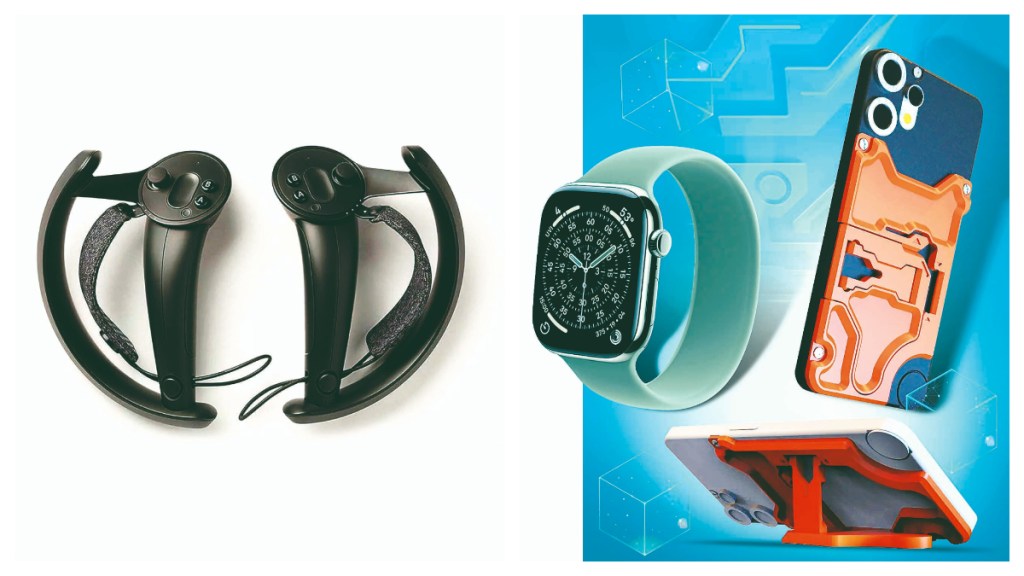Manufacturing revolutions rarely blaze into view. They often emerge as quiet upgrades inside factories, invisible to the people buying the products. Apple’s decision to 3D-print every titanium case for its new Watch Ultra 3 and titanium Watch Series 11 fits that pattern.At first glance, it is classic Apple theatre – engineering rendered with a sense of inevitability. The company is printing cases using 100% recycled aerospace-grade titanium powder. “It wasn’t just an idea… it was an idea that wanted to become a reality,” says Kate Bergeron, vice-president of product design. Additive manufacturing has long excelled at prototypes, integrating it into one of the world’s most scrutinised, high-volume supply chains marks a new threshold.
Yet Apple’s move is not a lone outlier. Across consumer electronics, the quiet adoption of 3D printing has been gathering pace. Lenovo, for instance, has used 3D-printed metal brackets and hinge components in certain ThinkPad models. HP prints more than a hundred internal components for its own printers and PCs using its multi jet fusion technology.
The trend stretches beyond laptops and phones. Companies working in immersive tech increasingly rely on printed hardware. Formlabs, a leading printer maker, has partnered with VR device manufacturers to produce cushions, mounts and sensor housings for headsets such as Meta’s Quest prototypes and SteamVR accessories. These parts are not experimental: they are often used in limited production runs where custom geometry or weight savings matter more than economies of scale.
Even younger brands like Nothing, the London-based smartphone challenger, have used 3D printing for internal brackets and small-batch transparent components during early production of the Phone (1) and its earbuds. And in the camera industry, Sony and Canon use metal additive manufacturing for select structural components where intricate shapes or heat-dissipation properties are difficult to achieve with traditional machining.
Economics and Environmental Edge
What makes Apple’s shift distinctive is scale. Millions of printed parts alter the economics. Titanium machining is quite wasteful: large blocks milled down to thin-wall cases leave most of the material as scrap. Apple’s process, which recycles its own powder and reduces machining steps, solves an old problem with a relatively new tool. Sarah Chandler, the company’s vice-president of environment and supply chain innovation, frames it simply: “We knew 3D-printing was a technology with so much potential for material efficiency,” a crucial lever in the firm’s 2030 carbon-neutral strategy. In total, Apple estimates more than 400 metric tonne of raw titanium will be saved this year alone thanks to this new process.
The timing also matters. After two decades of globalisation, supply chains are being re-examined under the lens of resilience and geopolitics. Additive manufacturing doesn’t eliminate global networks, but it can shorten them with fewer suppliers and more production optionality. In the US, Europe and China, 3D printing is already treated as strategic manufacturing infrastructure.
Maturing Role of 3D Printing
Still, 3D printing is not about to supplant traditional machining. Industrial printers and materials are expensive, powder production is itself a specialised process, and quality control demands highly trained operators, monitoring how it is placed, layer by layer, with software and thermal simulations.
“We’re extraordinarily committed to systems change,” says Chandler. “We’re never doing something just to do it once… we’re doing it so it becomes the way the whole system then works. Our North Star has always been to design products that are better for people and planet. When we come together to innovate without compromise across design, manufacturing, and our environmental goals, the benefits are exponentially greater than we could ever imagine.”
But the accumulation of examples across industries shows the technology edging out of its adolescence. In aerospace, GE prints fuel nozzles. In healthcare, Stryker prints titanium implants.
Apple’s contribution is simply to widen the aperture. By pushing 3D printing into the high-volume, high-perfection world of premium wearables, where the mirror finish of a Watch Series 11 case must be flawless and the Ultra line demands extreme durability, the company forces a new question onto its peers: if this is possible at Apple’s scale, what else might be? The competitive pressure alone ensures others will at least explore similar pathways. “We’ve watched this technology mature for a long time and seen its prototypes become more representative of our designs,” says J Manjunathaiah, Apple’s senior director of manufacturing design for Apple Watch and Vision. “Using less material to make our products has always been the intention. Previously, we hadn’t been able to make cosmetic parts at scale with 3D printing. So we started to experiment with 3D-printing metal to make cosmetic parts.”
A watch case may not seem the most obvious herald of a new production era. But taken alongside Lenovo’s laptop hinges, HP’s printed printer parts, Fairphone’s repairable modules, VR accessories and camera components, Apple’s move looks less like an anomaly and more like a marker of where mainstream manufacturing is drifting. The future isn’t printed (not yet), but parts of it increasingly are.








